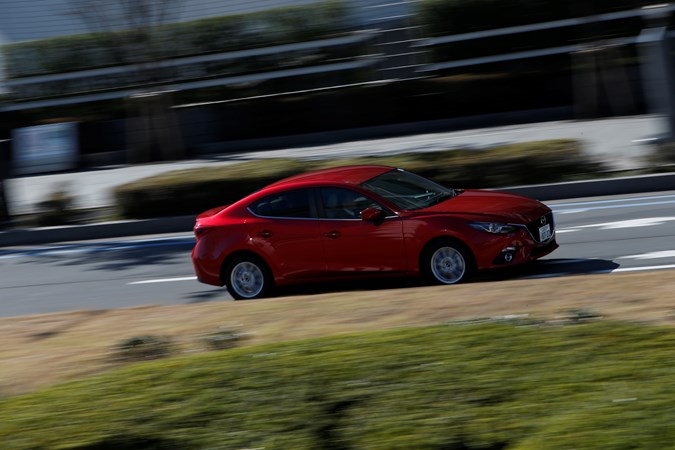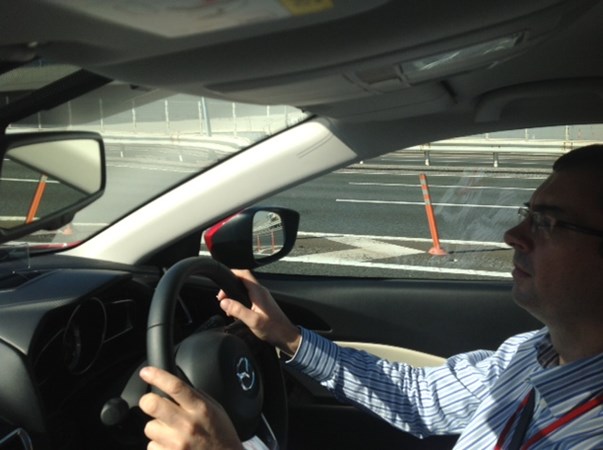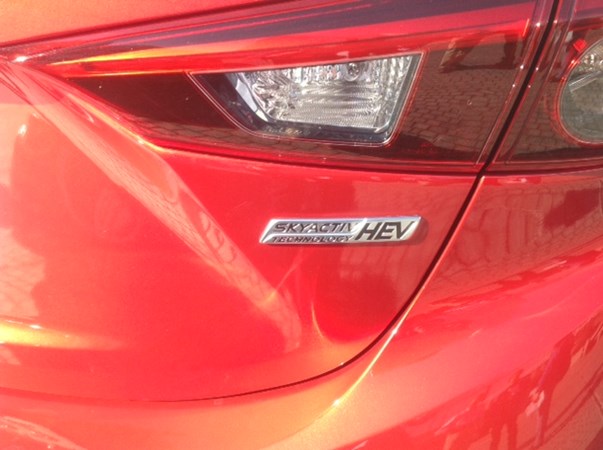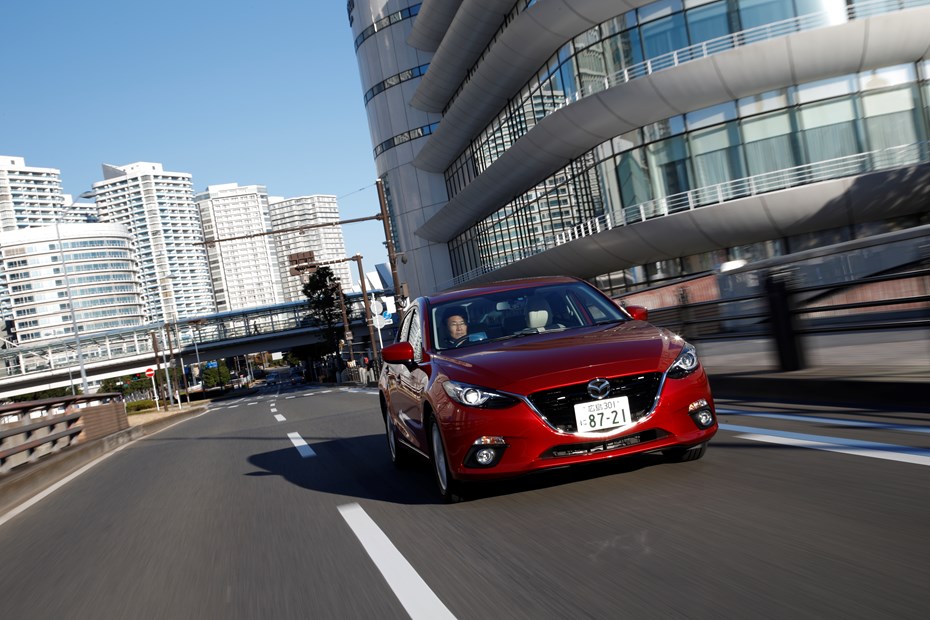Mazda has launched a new hybrid version of its Mazda 3, but it is only on sale in Japan at the moment.
It’s based on its 118bhp 2.0-litre petrol engine and utilising a 80bhp (60kw) motor and electric batteries with a CVT automatic gearbox.
The Japanese company claims that the electric motors can power the car for over a mile. With this the ‘3 can reach speeds of over 24mph before the conventional motor needs to provide assistance.

Petrol/Electric hybrid technology
From the outside there is little to differentiate the standard saloon model (dubbed ‘Fastback’ in the UK) from the Hybrid, bar a badge on the boot lid and slightly smaller boot due to the electric motor and batteries.
Mazda has borrowed the hybrid technology from fellow Japanese company Toyota, so it is well proven and developed through such models as the Prius. Mazda is keen to point out that it has adapted the tech to ensure it delivers as good a driving experience as its standard Mazda 3 does.

Smooth driving experience
A very short test drive of nearly six miles over a mixture of driving including urban roads and motorways reveals that the system is very smooth when switching between electric mode-only and motor-assisted driving.
What’s also clear is how the hybrid is very much like the standard Mazda 3 Fastback to drive, which already proves to be one of the best hatchbacks for drivers on the market. It is only at low speeds that the quietness of the electric motor means you realise you are driving a Hybrid.

Hybrid version versus diesel
However, despite a positive – albeit short – test drive it is uncertain whether this Japanese version will make it to the UK. There are two reasons: i) cost ii) tax and running cost benefits given the talents of the new Mazda 3.
Firstly the cost of fitting hybrid technology to a car forces up its list price so it is more expensive to buy and more expensive to run as a company car.
Secondly, the most efficient UK Mazda 3 Fastback is the 2.2-litre diesel at 104g/km of CO2 with an average claimed fuel economy of just over 72mpg. That average fuel consumption figure is not far off the hybrid, so emissions are likely to be relatively close too, therefore any savings in tax aren’t likely to be huge either.
Road tax for the diesel is £10 (at 2013/14 rates) while company car user-choosers in the 20 percent tax bracket in the UK will pay £48 a month for the entry-level diesel Fastback (saloon), which is very competitive already.
It helps explain why Mazda has been concentrating on more efficient versions of conventional technology (a process it dubs ‘SkyActive’) rather than rolling out electric vehicles or hybrid versions. It’s this route that is enabling Mazda to deliver cars that it believes works for company car drivers both in terms of monthly tax costs and on-going running costs.
While the Hybrid model reveals Mazda has a really good dual-power version on its hands, it remains to be seen whether it will make UK it to shores.
To read the full Mazda 3 review click here.
*Fuel consumption figure is from the Japanese test, which is claimed to be more representative of real world driving conditions than our NEDC – or New European Driving Cycle.





